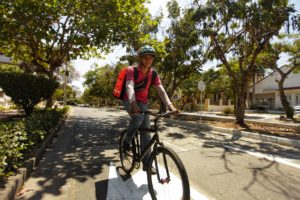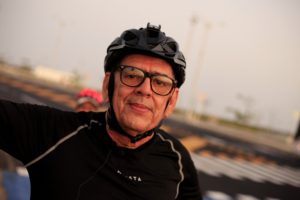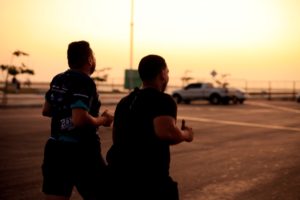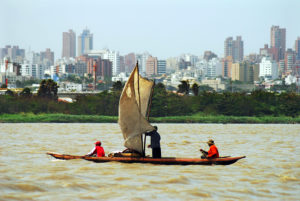The city of Barranquilla in Colombia is a stellar example of urban planning incorporating blue and green spaces to create a safe, beautiful community. More than half the world’s population lives in cities and is expected to reach seven billion people by 2050. In response, the World Economic Forum is collaborating with the Government of Colombia on a global initiative that supports city governments, businesses, and citizens around the world to create an urban development model in harmony with nature. The BiodiverCity initiative encapsulates a strategy of the local government to support actions and projects creating blue and green infrastructure. It provides a roadmap for connecting citizens with nature within an urban context. The World Economic Forum and development banks are collaborating with the local government to redevelop the city in ways that improve sustainability and connect citizens to nature. The BiodiverCities initiative has changed the way that Barranquilla engages with innovation in governance.
A couple of decades ago, Barranquilla was in bankruptcy. It had very little income, a ton of debt and the public purse was in disarray. Today’s green projects have been integrated into a wider transformation process of the city that starts with the recovery of its public finances and how the city does business. For example, with the Todos Al Parque program, the Mayor’s Office works with several public-private entities that help maintain the park’s infrastructure. All these investments are made with sustainability in mind. Environmental sustainability was prioritized, and Barranquilla has uniquely tied environmental restoration to improving the quality of life for all its citizens. It’s a change in the way of thinking of a city that previously was not known for these types of investments. And now, they’re leading the way not just in Colombia, but in Latin America. Here are some highlights of the blue and green infrastructure projects underway in Barranquilla.
Ciénaga de Mallorquín Park is a wetland, mixed-water ecosystem with mangroves that have been turned into a green space park with 3.8 kilometers of pathway and bike lanes. It was a neglected space where Barranquilla residents were either unaware that the area existed or occasionally dumped their trash. And now, thanks to these new investments, not only is the ecosystem recovering but also the community has a vibrant new greenspace to enjoy. It provides social opportunities to neighboring communities and makes them part of that process of ecosystem recovery and opportunities for ecotourism. So far, 61,110 mangroves have been planted for the restoration of the Mallorquín project.

Gran Malecon Riverwalk – Barranquilla is situated along the northern coast of Colombia, at the intersection of the Caribbean Sea and the delta of the Magdalena River. The Magdalena River is Colombia’s largest river and was responsible for most of Colombia’s development throughout the 20th century. The riverfront was heavily industrial and now a five-kilometer section has been reclaimed for public use as a Riverwalk. Canals and waterways that were influential in Barranquilla’s development a century ago are transitioning to livable spaces again, recovering the quality of the water that’s in them and making them more accessible for public use. The riverfront was recently deeply industrial before this public space investment and there was no public access. The public perception of the riverfront was that it was uninhabitable and polluted. As a result of these recent changes, community perceptions are improving and the river is being enjoyed again by residents. The Riverwalk has become one of Colombia’s most popular tourist attractions, and it’s changed the perception of citizens about the environment.
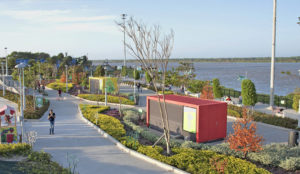
“Todos Al Parque” is a park recovery program that’s been implemented all across Barranquilla. The Todos Al Parque program is created through a district policy for urban environmental management for the renewal, maintenance, and financing of public parks and green spaces in the city. So far, two hundred and fifty-three parks have been recovered. It has improved access to high-quality public spaces all across the city. The parks are of equal quality, not just in the more affluent areas, but all around the city impacting its 188 neighborhoods. This has tangibly helped citizens to see how Barranquilla is improving as a whole. Ninety-three percent of Barranquilla’s residents are now within an eight-minute walking distance of one of the parks. Residents are seeing how public space can be recovered and how investment in greenspace infrastructure pays off. And it’s not just environmental aspects that are improving, social, educational, and cultural aspects are increasing as a result. The parks provide places for pop-up vaccination sites, sports programs, and makeshift markets, where residents can access a range of opportunities.
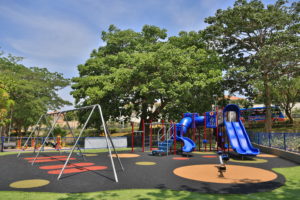
Being a BiodiverCity is more than just increasing green space, it also includes incorporating clean energy, a circular economy, better transportation alternatives, and active mobility. Several large-scale blue and green infrastructure projects are already underway and more are going to be inaugurated within the next several months. Some of them focus on green infrastructure projects or transportation initiatives, but the whole idea is to reconnect citizens with nature. Their mayor describes the contributions cities like Barranquilla make by preserving and conserving their environmental richness. This is a stellar example of how to preserve the environment and improve community health through investment in blue and green infrastructure. Colombian air pollutant contributions are relatively small, less than 1% of total emissions. So looking at the bigger picture of what local authorities can do in a Latin American context is to preserve biodiversity. Investing in these types of green and blue projects has helped change the way Latin American citizens view climate and how they’re connected to it. They’re more connected to their surroundings and the very rich biodiversity of Latin America.
Barranquilla is collaborating with development banks, such as CAF to set up a governance scheme for a network of biodiversity cities extending beyond Colombia. Credits from development banks including AFD (Agence Francaise de Developpement), IDB (Interamerican Development Bank), Deutsche Bank, and CAF have provided financing structures that are transformative collaborative successes. They invite other mayors and cities not just in Colombia but across Latin America, to join in on this successful model and also become biodiversity cities. So far, sixty-four cities in Latin America have joined, including cities from Argentina, Ecuador, and Brazil. They are committing to connecting citizens with nature each with their focus. Cities with shared goals are talking about emissions and more. It’s a huge discussion, and even if it’s mostly led by even national authorities, local governments can also chip in by doing these types of projects. These projects not only help increase environmental awareness they also contribute to environmental sustainability and a higher quality of life for citizens. Urban planners and government officials can use these inspiring examples as demonstrations of how green and blue spaces can be incorporated into city designs to create thriving, healthy community spaces.
